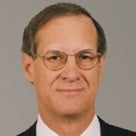The smart Phd economists at the Fed are actively trying to find new models to use which better reflect things other than the macroeconomic approach they have traditionally used. The Fed completely blew it in 2007-2008. They had no idea what was about to happen. Greenspan claims he did not see it coming and “only five people knew what was about to happen. I have never figured out if that is just his way of covering up his own incompetence at failing to see the greatest economic event in seventy years, or if he really believes it. The fact is it is nonsense.
Models are as we all know, just the output of a set of assumptions and if the assumptions are wrong the output is wrong. It is far better to listen to senior people with deep experience than to rely on mathematical models. In November, 1993, when we were creating the first hotel CMBS program, two of us discussed how in ten or 12 years the whole thing would collapse because Wall St would loosen underwriting and go too far on leverage. In the period 2005-2007, I heard several senior people in the capital markets talk about how this was going to all end in disaster. In May 2007, at the spring ULI conference, I had lunch with the COO of a major REIT, the head of CMBS at a rating agency, the senior MD of a major property brokerage firm and one other person. The lunch discussion was which week the CMBS and capital markets in general would begin to collapse. We agreed it would be around the end of July 2007 which is about when the unwinding of the markets began. When Bear Stearns collapsed I was told the following week that Lehman might be next. In August of 2008 I was hearing that Lehman was going to go Chapter. There were other such stories around through this period and several senior people in the business who clearly predicted the collapse. Many of us could not understand how things went on as long as they did. Several people predicted the collapse fully two years before it actually occurred and kept saying it was coming.
The point is, none of us who correctly predicted the collapse of the capital markets had a model of the markets or the economy. All we had was years of experience and the objectivity to look at what was happening and to speak up and warn people. All to no avail. The Fed, instead, relies on a bunch of academic macro trained economists who have never worked in the capital markets so they have no feel for things. All they have a data, but no street sense. No gut feeling because they have no experience. The same is true for many academics at major universities. They also have come to rely on mathematical models using various data inputs.
The Fed, and the academics need to get out into the real world and regularly sit with the senior traders, bankers and lenders. They need real time inputs to much better understand trends in lending form lenders, trends in trading from traders and trends in deal structures from bankers. This needs to be done on a constant basis. Not just once in awhile. The Fed will say they talk to banks and so they do get input. They are not listening or else they are not getting real input, but instead are being told what people perceive the Fed should hear. More likely the Fed is relying on their models and not on real world players in the markets. As a result, we cannot rely too much on Fed models or projections. While they are important input to any investment or lending positions, do not forget they completely missed the total collapse of the markets just four years ago.
I like to talk to lots of different senior people who are daily active in the markets and try to get a feel for what the psychology is, what are the underwriting criteria which is very indicative, how are spreads moving, what is happening with covenants-are they being loosened too much, where is the 10 year yield and how much capital is sitting on the side. It was completely clear in early 2007 that there was no underwriting, no covenants, and no spreads. Things were completely irrational. When I was told by my friend who ran CMBS at a rating agency in 2007 that it was possible to construct a virtual CMBS pool. I knew the end was very close.
Trust your gut. Don’t go with the crowd if you think they are wrong. Don’t think the models or the Fed know more than you do. Think for yourself. If you think that things are about to unravel get out. Several of my friends stopped doing deals in late 2006 and early 2007 because they said nothing made sense. If you think it is the bottom and we on the way up, then go back in to buy or invest. Just remember the experience from 2005-2007 when several people said the end was near, and my conversation in 1993 about how the whole thing would collapse in 10 years. Somehow it takes longer to collapse than you would expect because most people don’t understand it, or do not want to believe bad things will happen. I got completely out of the stock market in May 2007 despite my broker telling me I was nuts, but I had to sit on the side and wait to be proven right. Get lots of market input from senior people who are objective. Have the courage of your convictions on the up or downside and stick with the decision unless new information comes to change your thinking.
© 2025 ALM Global, LLC, All Rights Reserved. Request academic re-use from www.copyright.com. All other uses, submit a request to [email protected]. For more information visit Asset & Logo Licensing.








